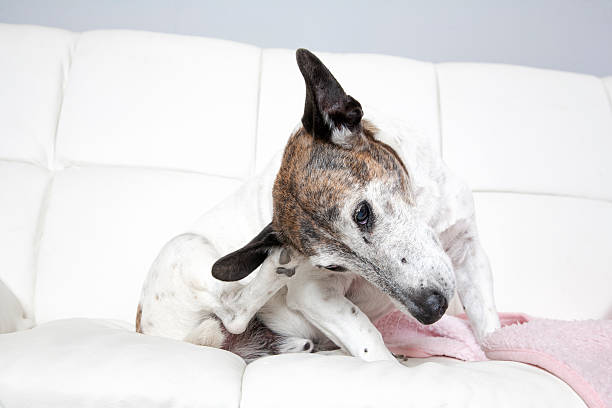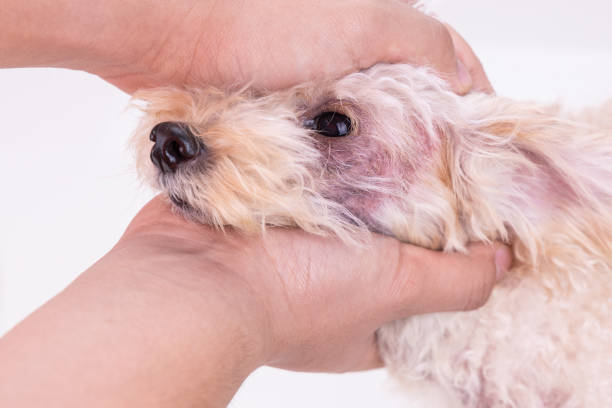Just as humans need dental healthcare, dogs do too. Unfortunately, the importance of dental health in dogs is often ignored by numerous pet owners until irreversible harm occurs. Ignoring dental care can lead to a host of problems in most dogs, including tooth decay and possibly even heart disease.


Dog’s Teeth in General
Dog teeth are very similar to human teeth, as they come in different shapes and sizes. However, there are some key differences between the two. Dog teeth are much smaller than human teeth and are filled with softer tissue. When a dog has a healthy mouth, its teeth have no problems. This means that the teeth have not been exposed to bacteria or damage from chewing.
The health of a dog’s teeth plays a big part in their overall oral health. If your dog gets into something particularly harmful to the teeth, it may end up with serious dental health problems. The condition that is most common in dogs is periodontal disease. This happens when the gums are not supporting the teeth properly.
This disease can result in tooth loss and gum disease that results in bad breath, or even worse – possible infections of the tooth and bone. One of the best ways to prevent this disease is by keeping your pup’s teeth clean. This is important because it will help prevent plaque build-up and tartar on the teeth.
When plaque and tartar are not removed, they can harm your dog’s general health in the long run. This is why it is so important for you to give them proper care. Even if you have a dog with no teeth, it is still important for you to brush their gums to keep them healthy. This will also help prevent this disease and will also keep the dog’s breath fresh.


Oral health is important for both people and dogs. Like people, dogs can develop gum disease and other dental problems if they do not care for their teeth.
Here are some tips for keeping healthy teeth:
- Brush your dog’s teeth regularly. This is the best way to keep plaque and tartar from building up.
- Feed your dog a diet that is low in sugar and carbohydrates. These foods are the number one cause of dental problems.
- Always give your dog a treat to reward good behaviour. This will teach him that he gets rewarded for good behaviour.
- Do not give your dog bones or rawhides. These foods can cause serious gastrointestinal problems.
- Don’t leave food out all day, especially in the kitchen where food is likely to get cold or spilled.
Also read: Hemorrhagic Gastroenteritis in Dogs: Causes & Prevention
Different Ways to Keep Your Dog’s Teeth Healthy
Brushing
The most common way to clean your dog’s teeth is by brushing them regularly with a dog-specific toothbrush and toothpaste. Brushing your dog’s teeth after each meal and at least once a week is also important. Brushing removes plaque, bacteria, and food particles that can cause infection.
Toothbrushes
You can purchase a toothbrush for your dog or make your own with a child’s toothbrush. The bristles should be soft and absorbent. Tooth brushing is an important preventative measure. Your dog should be brushed daily, or at least twice a week, to remove bacteria and plaque that can lead to dental disease.


Rinsing
Rinse your dog’s whole mouth out with warm salt water to prevent plaque buildup. Rinsing your dog’s mouth clean can also help remove tartar buildup, which is a cause of dental disease and may lead to periodontal disease. You can also rinse your dog’s mouth with a special dental rinse weekly to help remove any built-up plaque or tartar. This is important before brushing the teeth so that you aren’t removing plaque and bacteria with each brush.
Baking Soda
Baking soda can be used as a paste or sprinkled on the teeth to help remove tartar.
Plaque Removal
Plaque can be removed by brushing and rinsing with a toothbrush.
Oral Medication
Some dogs may require oral medication to help with plaque buildup. The dog’s diet should include various sources of calcium, phosphorus, and vitamin B. Calcium can be given in supplement form or in the dog’s food. Vitamin B2 (riboflavin) is required for normal gingival development and maintenance.
Chewing
Another way to help keep your dog’s teeth clean is by providing them with chew toys and dental treats that help scrape plaque and bacteria off the teeth. Though it is important to keep clean teeth, you should not use human toothpaste on dogs because it contains fluoride, which can be toxic.
Dental Care
If your dog has a lot of dental diseases, it is best to visit a veterinarian who can recommend treatment options for your dog. If you’re having trouble keeping your dog’s teeth clean, you can take them to a veterinarian who can recommend professional dental cleaning options.
Check your dog’s teeth daily for signs of dental disease and tartar buildup regularly, and continue to monitor their teeth with professional dental exams.
Dental disease is one of the most common health problems diagnosed in dogs. It’s important to be aware of dental disease signs and take your dog for regular dental checkups. You can help keep your dog healthy and comfortable by checking your teeth for signs of dental disease.


Signs Your Dog has Dental Problem
The average dog has 42 teeth. Like humans, dogs need their teeth to chew food properly to digest it. Poor oral health in dogs can lead to various health problems, from gum disease to heart disease.
Here are some signs your dog may be having oral problems:
- Bad breath/foul smell
- Discomfort when chewing or eating
- Excessive drooling
- Broken or missing teeth
- Swollen gums
- Pus from the mouth
- If your dog is licking his lips excessively and is in pain
Dental problems can be prevented by good oral hygiene and regular dental checkups. A veterinarian can examine your pup’s teeth and determine any serious dental issues. If a problem is detected, treatment may be necessary.
How to Brush Your Dog’s Teeth
It is important to brush their teeth regularly to keep them clean and healthy. Here are a few tips to help you get started:
- Start by getting your dog used to having its mouth handled. Gently rub your dog’s teeth and gums with your finger daily until they are comfortable with it.
- Use a soft-bristled toothbrush and dog-friendly toothpaste.
- Gently clean your dog’s teeth by brushing in a circular motion with short, quick strokes.
- Avoid toothpaste that contains sodium lauryl or Laureth Sulfate (SLS), and avoid brushing your dog’s teeth too hard.
- Use a dog toothbrushing comb to remove any debris and plaque from the gum line of your dog’s teeth.
- When brushing is complete, make sure your dog’s teeth are brushed out (not just brushed).
- Don’t brush your dog’s teeth if you will put them in the tub for a bath or run a water hose over their body.
- Clean your dog’s teeth every night and morning with dog toothpaste, baking soda, and water paste.
Conclusion
Your dog’s oral health is important. Not only does it affect their overall health, but it can also lead to costly and invasive procedures down the road if left untreated. By taking your dog to the vet for regular checkups and brushing their teeth regularly at home, you can help keep their smile healthy and sparkling!


